Vaude Hogan SUL 1–2P review: smart and light escape pod for intrepid explorers
Vaude's Hogan SUL 1–2P tent is a comfortable, cleverly designed, easy-to-carry, virtually all-conditions shelter for the adventurous

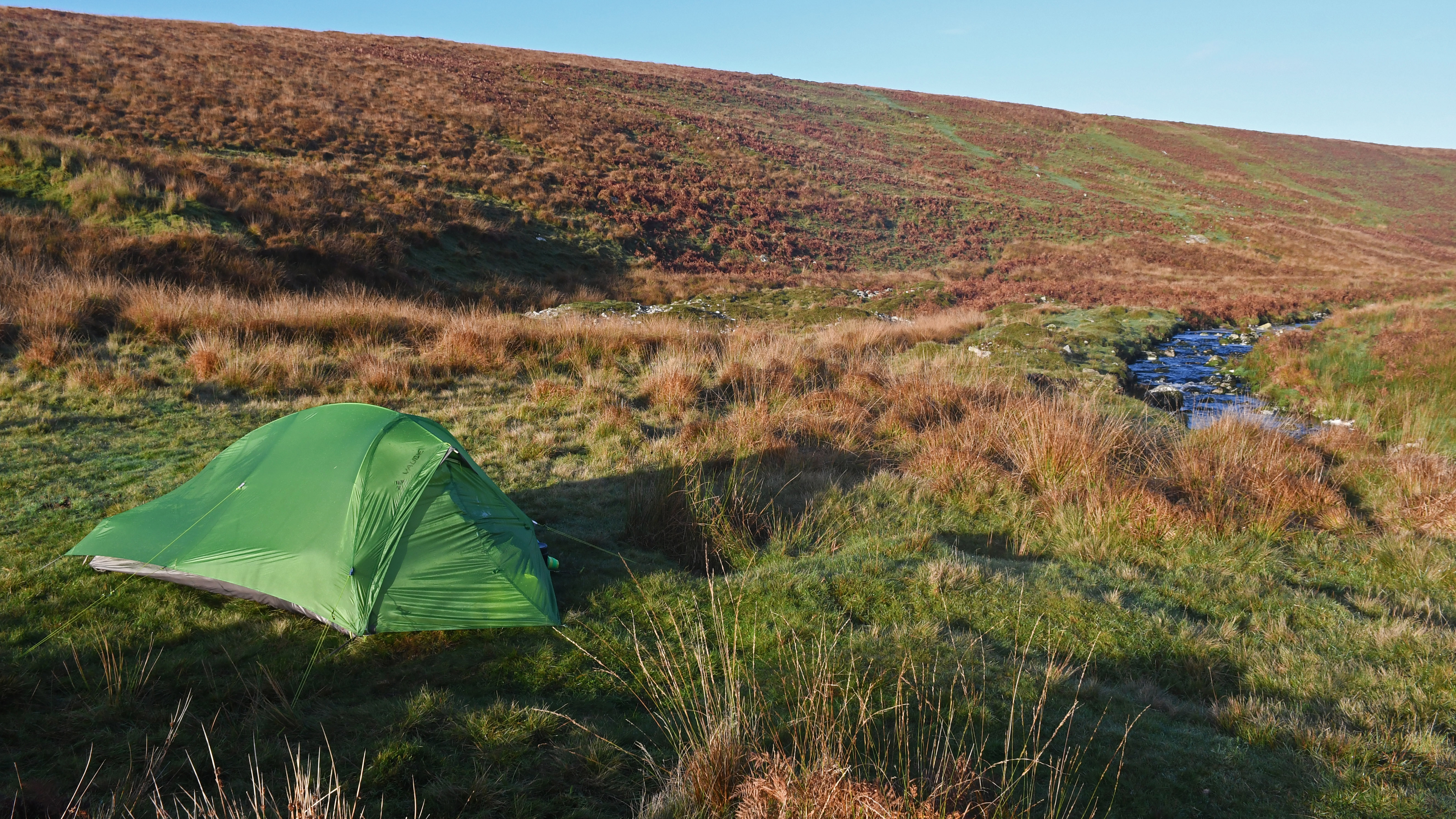
Palatial for one and big enough to take two adventurers, the Hogan SUL 1–2P backpacking tent from Vaude is a versatile, lightweight, highly functional shelter, ideal for any human-powered escapade that involves spending several nights out in the wilds.
-
+
Small pack size and lightweight design
-
+
Adaptable flysheet allows varying amounts of ventilation
-
+
Excellent single-pole design
-
+
Can be pitched fly first (with footprint)
-
+
Good interior pockets
-
+
Discreet colour
-
-
Single entrance/exit
-
-
Small vestibule
-
-
Use of mesh in the inner lowers internal temperature
Why you can trust T3

I’ve used multiple Vaude tents in the past, from ultra lightweight bivvies to more substantial shelters, and I have always been impressed by the German brands’ premium-quality gear, so I was really looking forward to taking the Hogan SUL 1–2 Person tent out for some overnight escapades.
I’d already heard good things about the Hogan, and Vaude’s proven heritage plus the quality of the materials employed in this shelter strongly suggested it would be one of the best backpacking tents on the market, but you don’t really know until you give it a proper go. So that’s what I did, on the wilds of Dartmoor in late autumn, at the tail end of the tent’s comfort zone.
Vaude Hogan SUL 1–2P review
Vaude Hogan SUL 1–2P review: price and availability
The Hogan SUL 1–2 person backpacking tent from Vaude is available now for a recommended retail price of £454.95 in the UK, and €557 across the European Union. The availability of the tent is a bit sketchy, with most third-party retailers, such as Trekkit and Alpine Trek, being seemingly out of stock at the time of writing. However, you can currently buy the Hogan SUL 1-2P at TrekkInn for £342.99.
Vaude Hogan SUL 1–2P review: specifications
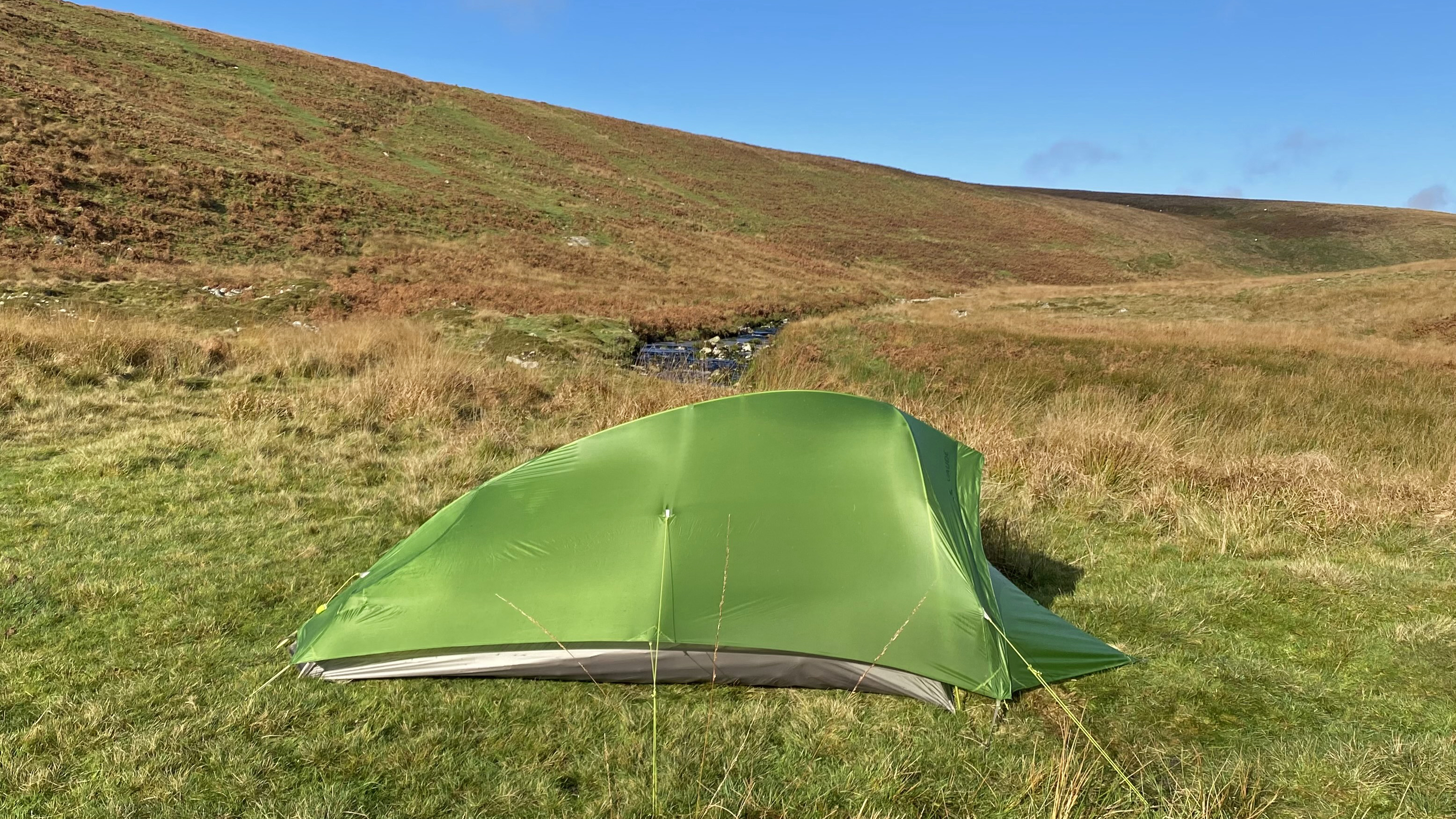
- Style: Pole-based, lightweight, 1- to 2-person backpacking tent
- Pack size: 40 x 12cm / 15.7 x 4.7in
- Interior dimensions (L x W x H): 235 x 90–110 x 95cm / 92.5 x 34.5–43 x 37.5in
- Exterior dimensions (L x W x H): 310 x 100–120 x 100cm / 122 x 39–47 x 39in
- Weight: 1,250g / 2lb 12oz
- Seasons: 3
- Capacity: 1 or 2 people
- Vestibules: 1
- Flysheet hydrostatic Head rating: 3,000mm
- Floor hydrostatic Head rating: 3,000mm
- Poles: DAC Featherlight
- Pitch time: 5 minutes
- Colour: cress green
Vaude Hogan SUL 1–2P review: design and ease of pitching
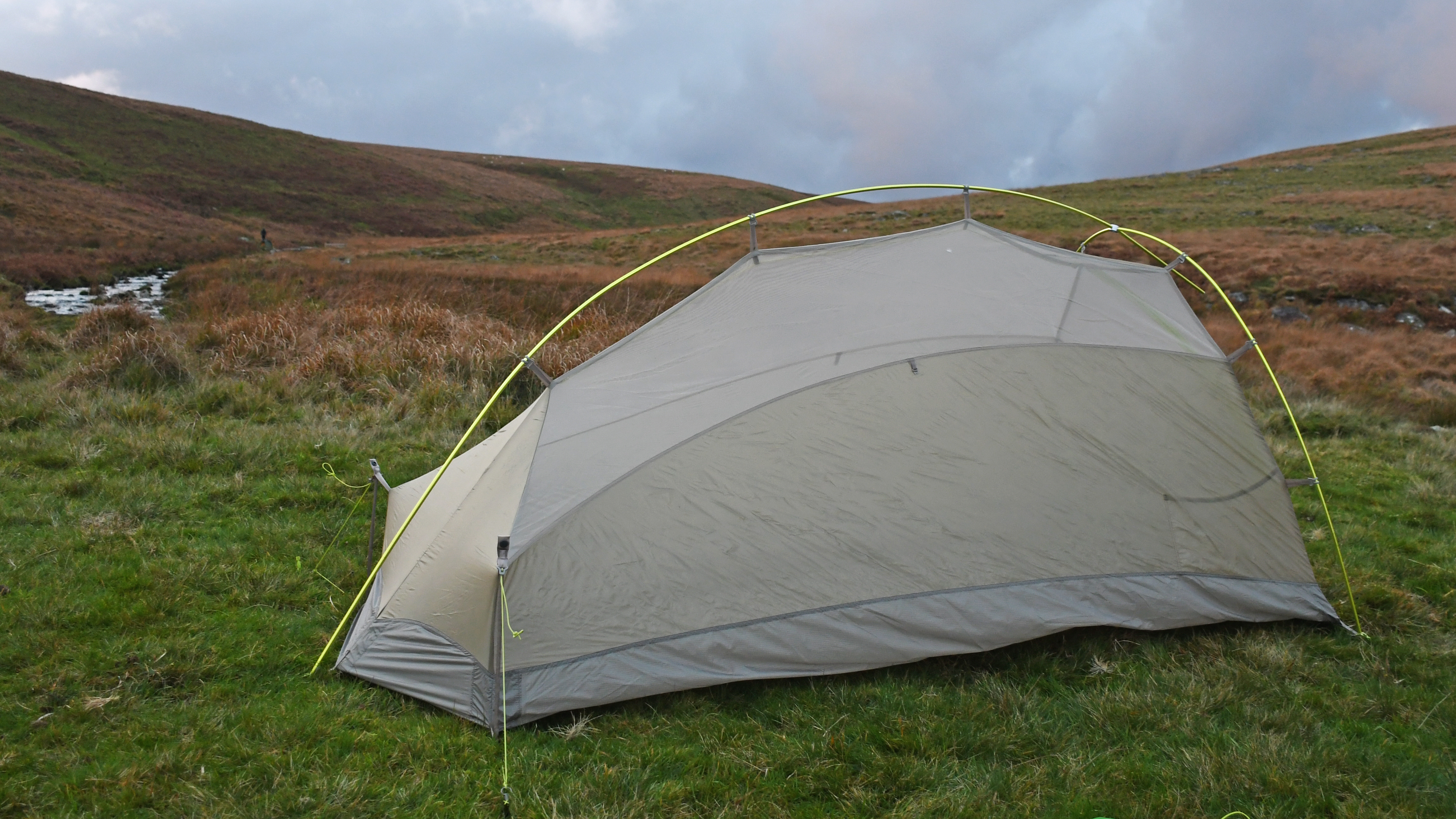
The Hogan comes in an unusual storage sack, which I wasn’t completely sold on until I’d used it a few times, but more about that below. Once it’s out of the bag, the smart parts of this tent soon become clear. There are pitching instructions on the inside of the bag, but for the most part it’s an intuitive and relatively pain-free process for one person to complete in around 5 minutes (or less, after a few goes).
The single Y-shape DAC Featherlight pole folds into 15 sections, with an elastic umbilicus keeping all the parts neatly together. Once you have assembled the pole, it’s an easy job to position the feet into the three shoes, two of which are positioned on either side of the head, and there’s one at the toe end of the main body of the tent. This gives you the skeleton of the structure, and from here you simply clip the hooks located on the outside of the inner tent over the poles, and peg the structure out in your desired position.
It’s a bit more fiddly, but the waterproof outer sheet can also be attached to the poles via little Velcro loops and clips on its underside, which means you can erect the tent fly first if you arrive at your chosen site during a downpour (although this is only really possible if you have the footprint [external link] to slot the end of the poles into – and this is sold separately). Even if you pitch the tent the more straightforward way (by hanging the inner first), it’s worth fixing the outer to the poles with these Velcro hoops and clips to help maintain the shape of the structure and get the fly seated correctly – this also makes it easier to peg it out properly, which improves the performance.
In addition, there are a couple of poppers on the exterior of the tent inner, which attach it to the fly – and these too help keep everything in place and increase the perceptible space inside the tent by reducing flapping. Aside from the spine pole, the Hogan has a couple of rods at the narrower end of the tent, built into the inner, which give the structure a bit more volume and height at the foot end.
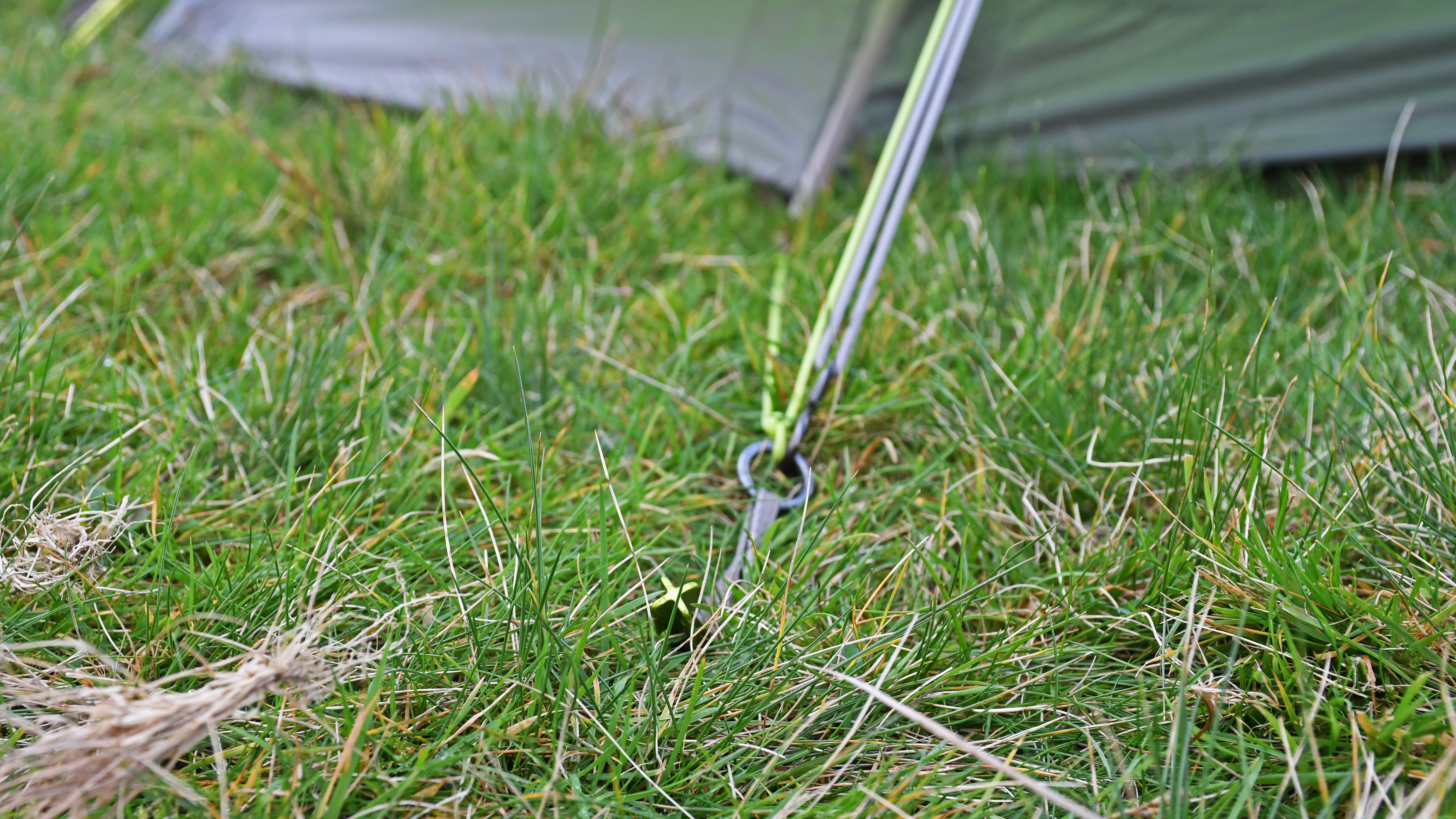
The tent comes with 11 ultra-light aluminium, star-topped pegs, enough to stake out the corners, sides and all five guide lines – this sounds obvious, but surprisingly it isn’t always the case with lightweight backpacking tents, which occasionally come with the bare minimum amount of pegs requited to pitch the structure (without enough to secure the guys). Happily, Vaude aren’t so stingy. There are reflective elements on the guy ropes to help avoid trips during the night.
Besides the guys, the flysheet is secured by being attached to the pegged-out part of the inner tent via little metal hooks and slot and twist connectors. The double-sided silicone-sealed flysheet and tub-style Micro Ripstop PU-coating groundsheet of the Hogan both boast a hydrostatic head rating of 3,000mm, which is more than sufficient to keep you and your gear dry and protected and the roughly geodesic shape of the tent means it can withstand very strong winds.
With the use of circular connectors, the sides of the flysheet can be pegged out in two different ways, one of which is raised off the ground and encourages an increased level of ventilation and air flow (ideal for summer), while the other enables you to pin the outer sheet much close to the ground (by putting the peg directly through the hoop), and this is much better for windy and chilly conditions.
The single vestibule is a modest size, but it is large enough to pop your pack and boots into to keep them dry overnight. The main door has a double zip, and you can clip the two sides together around the bottom of the right pole leg, which provides an easy-to-operate exit and entrance (handy in the middle of the night). Both the inner and outer doors can be rolled up and kept neatly open with Velcro hoops, and a small extension pole protrudes from the middle of the main Y shape to fit into a slot in the flysheet and make a small covered porch area that can be used to cook in if all the doors are open (obviously extreme caution needs to be exercised at all times when using a stove anywhere near a tent, and it’s best avoided if possible).
Vaude Hogan SUL 1–2P tent: performance on the trail
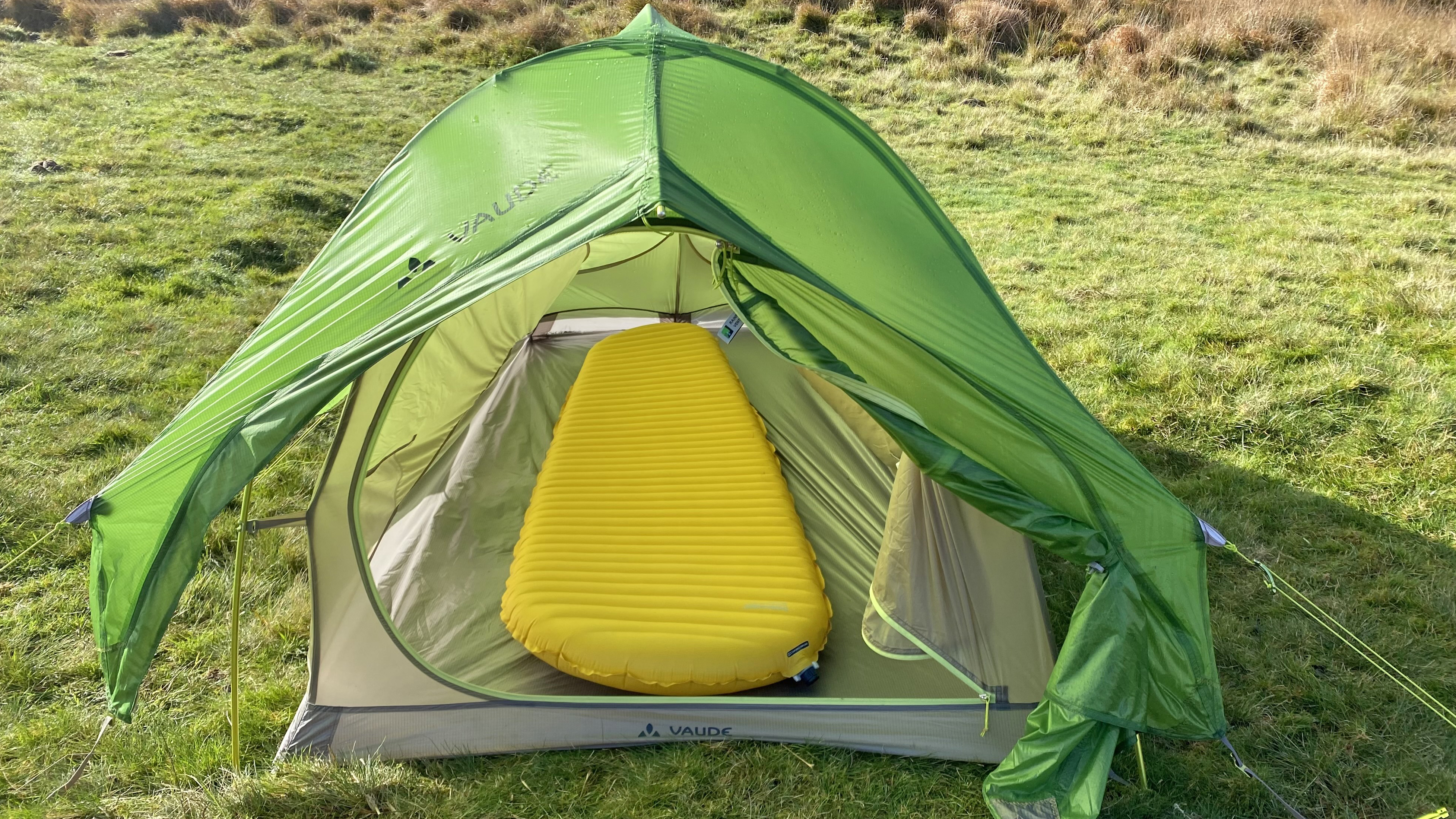
This backpacking tent is suitable for use in all conditions except snow, and I put it to the test in autumn, on the wilds of Dartmoor, to see how it would cope. In the microclimate of the moor in mid October, the weather was inevitably extremely changeable, lurching from T-shirt–wearing warmth to puffer-jacket–demanding chilliness in the space of 15 minutes, and then swapping back again. Temperatures in the evenings, mornings and overnight were reliably shivery, however, so it was ideal for testing 3-season tents such as this one.
I really like the natural colour of this tent, which allows you to be discreet when you are wild camping – something that is permitted once more across most of Dartmoor, but it’s still nice not to disrupt the look of the landscape for others by having a luridly coloured tent (and when you’re wild camping elsewhere it’s often best to blend right in with your surroundings).
A per above, I found the pitching process to be pretty simple and painless, which is always a relief when you’re putting up a new technical tent in challenging conditions such as fast fading light and rain (as I was for my first night out). As noted, in theory you can pitch the Hogan flysheet first, but only if you have the footprint, which I do not. But that wasn’t too big a deal, because the speed of assembly is fast enough to keep things mostly dry.
The inner of the tent is 110cm wide at the head end, tapering to 90cm by your feet. It’s a really spacious and comfortable area for one person, but big enough for two people so long as you don’t mind sleeping cheek by jowl. I have spent a night wild camping in the Hogan with my 12-year-old daughter, and we had sufficient room (albeit with our camping mats overlapping somewhat), but I can think of plenty of people I would not want to share such a space with. If you do squeeze two people in, your packs need to go in the vestibule, which is pretty small, so any middle-of-the-night exits involve clambering over a lot of stuff.
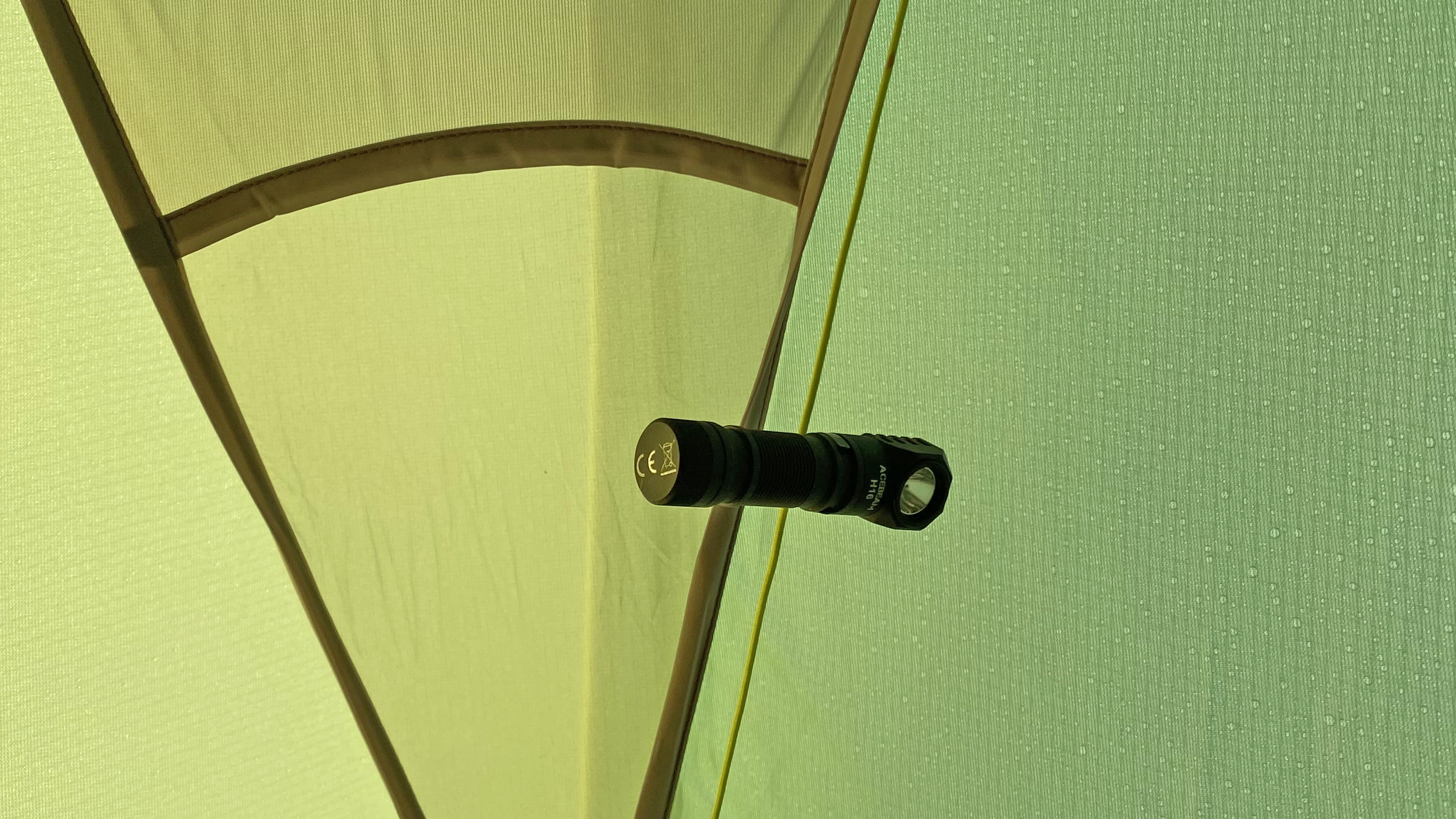
A cord running the length of the tent enables you to hang things such as torches
Happily, though, small-stuff storage is much easier. There are lots of pockets and hanging elements on the inside of the Hogan, so you (and your partner, if applicable) can organise things such as head torches in places where you can lay your hand on them instantly, even in the middle of the night. There’s also a cord running the length of the tent, which can be used to hang a torch on, or use for various other applications.
The weight of the Hogan is kept down by the liberal use of mesh in the construction of the inner, which also features an insect-barrier mesh door. The amount of ventilation this supplies is great in summer, but a bit of a mixed blessing by the time you get towards the end of the 3-season window the Hogan has been designed for.
I have been using a good three-season backpacking sleeping bag and camping mat, but when I had the tent rigged with the guys fully extended, so the flysheet was positioned high off the ground, I found it got a bit breezy and chilly in the coldest part of the night. This was a user error on my part, though, and when I adjusted the fly and pegged it closer to the ground, the tent was much warmer (and I really love the fact you can trim the tent in two different ways according to the season and conditions).
I must admit to being initially mystified by the design of the storage pack the Hogan comes in, which folds over and needs to be closed with mini metal hooks. However, when it comes to packing down, it’s really nice not to have to spend ages attempting to squeeze a recalcitrant bundle of dew-heavy material into a tiny bag when you just want to get going, and over time I grew to appreciate it.
Vaude Hogan SUL 1–2P review: verdict
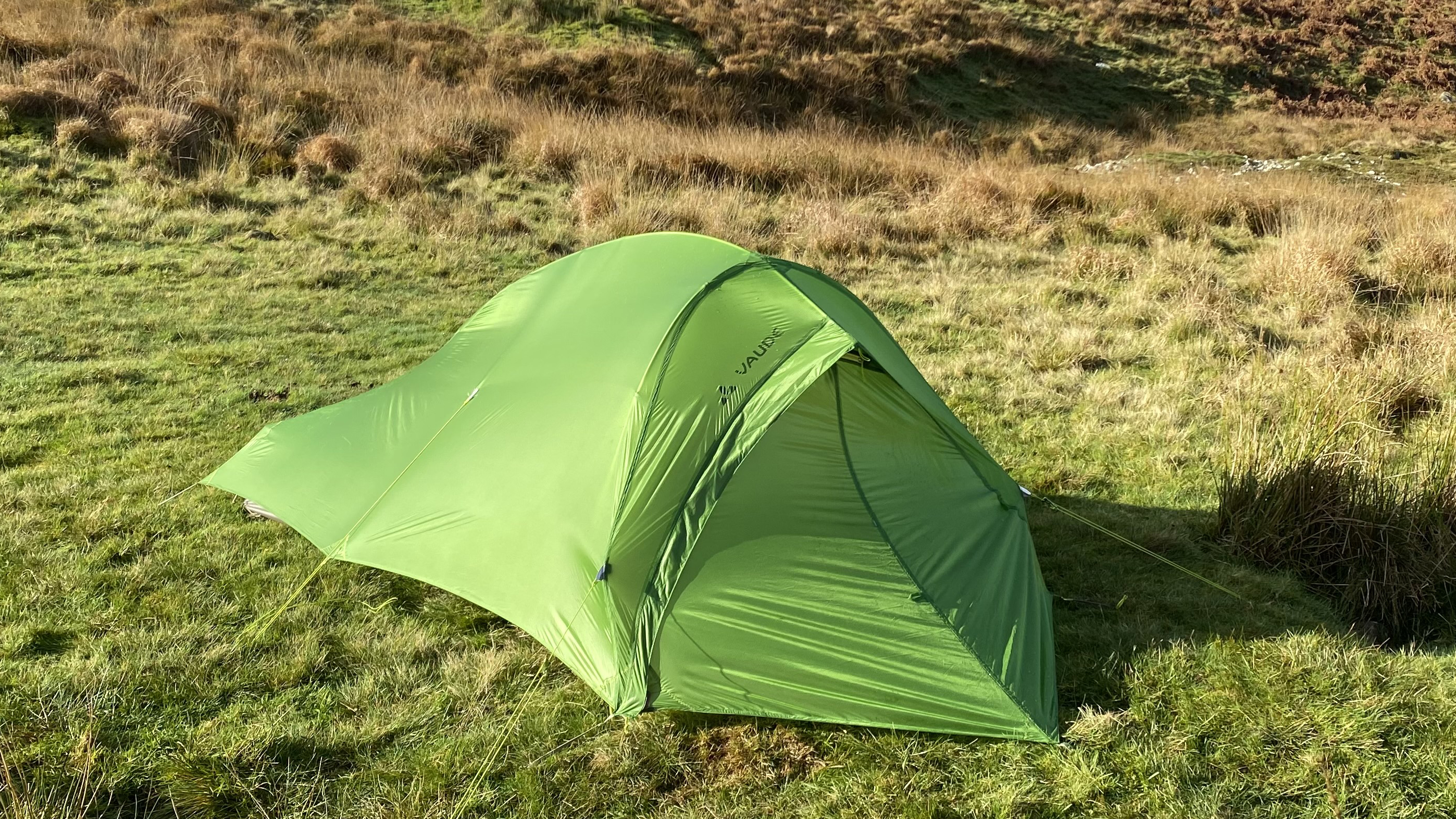
It’s not a cheap product, but the Hogan SUL 1–2P tent from Vaude is an excellent investment for solo backpackers and couples who enjoy wild camping and taking on multiday trekking adventures, and it’s robustly built to last for many years and multiple adventures.
Suitable for use from early spring right through to late autumn (so long as you have good 3-season bags and mats to sleep on and in), this versatile shelter can handle high winds and wet conditions, but it can also be tweaked to increase airflow and ventilation in mid summer. It’s lightweight, easy to carry, quick to pitch, and has a whole host of nifty features that make the camping experience comfortable and enjoyable.
Vaude Hogan SUL 1–2P tent: also consider
For an excellent lightweight 1-person backpacking tent that’s considerably cheaper, check out the Alpkit Soloist, which offers high performance for less outlay. If you have a bit more cash to splash, you might want to have a look at the Sierra Designs High Route 1 3000 1P tent, or the innovative Vango F10 Project Hydrogen.
Sign up to the T3 newsletter for smarter living straight to your inbox
Get all the latest news, reviews, deals and buying guides on gorgeous tech, home and active products from the T3 experts

Author of Caving, Canyoning, Coasteering…, a recently released book about all kinds of outdoor adventures around Britain, Pat Kinsella has been writing about outdoor pursuits and adventure sports for two decades. In pursuit of stories he’s canoed Canada’s Yukon River, climbed Mont Blanc and Kilimanjaro, skied and mountain biked across the Norwegian Alps, run ultras across the roof of Mauritius and through the hills of the Himalayas, and set short-lived speed records for trail-running Australia’s highest peaks and New Zealand’s nine Great Walks. A former editor of several Australian magazines he’s a longtime contributor to publications including Sidetracked, Outdoor, National Geographic Traveller, Trail Running, The Great Outdoors, Outdoor Fitness and Adventure Travel, and a regular writer for Lonely Planet (for whom he compiled, edited and co-wrote the Atlas of Adventure, a guide to outdoor pursuits around the globe). He’s authored guides to exploring the coastline and countryside of Devon and Dorset, and recently wrote a book about pub walks. Follow Pat's adventures on Strava and instagram.
-
 This smart home gadget can tell you when to water, feed and move your houseplants
This smart home gadget can tell you when to water, feed and move your houseplantsStress-free plant care? Yes please
By Lizzie Wilmot Published
-
 Apple CarPlay gets an essential free update to fix recent issues
Apple CarPlay gets an essential free update to fix recent issuesHaving iPhone disconnection issues in your car? Don't worry, a fix is now available
By Rik Henderson Published
-
 New iPhone 17 Pro Max renders give us the best look yet at the flagship phone
New iPhone 17 Pro Max renders give us the best look yet at the flagship phoneThis is going to cause a stir
By Sam Cross Published